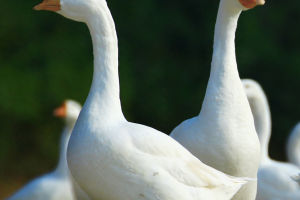The clown fish, also known as the anemone fish, is a very cute marine animal. The clownfish is named clownfish because it has one or two white stripes on its face, like a harlequin in an opera. There are many types of clownfish, each with a different body shape.
1. Amphiprion Ocellaris
It is the most classic clownfish image, which is quite widely distributed and has a mild temperament. Likes to interact with sea anemones, and the male Amphiprion Ocellaris interacts more frequently than other strains of clownfish, and has a good symbiotic relationship.
It is a kind of clownfish with strong vitality. It is a good choice for newbies. It is very suitable for mixed breeding, but it is best not to put it together with ferocious fish.
2. Blackfinned Clownfish
The Blackfinned Clownfish and the Amphiprion Ocellaris are very similar in the juvenile stage, but when the Blackfinned Clownfish reaches the adult stage, the orange part will be heavier than the Amphiprion Ocellaris.
It's easy to get people confused with the Amphiprion Ocellaris and the Blackfinned Clownfish, and it's hard to tell them apart unless you're a connoisseur. The color of Blackfinned Clownfish is bright orange, and the color of is a little darker.
Blackfinned Clownfish is not a good choice for newbies. If you have not raised sea fish for a long time and are not experienced enough, you'd better don't keep it.
Raising clownfish is not a simple matter, you need to pay attention to the fish tank, fish food, etc., so that it can grow up healthily.
1. Choose a fish tank
Breeding clownfish can be a common marine fish aquarium. However, in order to get the best viewing effect, it is recommended to use an ultra-white glass jar.
If you only keep a pair of clownfish, the tank body does not need to be too large, and the size can be 23×16×20 (CM) is enough.
The fish tank should follow the filter, which can remove impurities and change the water. In addition, you can also raise some sea anemones, corals, etc. in the fish tank for clownfish to hide and play.
2. Water quality requirements
Clownfish is a saltwater fish that can only be raised in seawater, so you can prepare the seawater yourself. Generally, it can be prepared with sea salt and pure water specially designed for seawater.
The average salinity of seawater in nature is 35‰, which is about 1.025 in terms of specific gravity. When we prepare seawater, we prepare it according to the ratio of 1L pure water and 35g sea salt. After stirring and melting completely, it needs to be measured with a salinity meter.
If the salinity is low, add salt appropriately, and if the salinity is high, add water, generally adjusted to 1.022.
Because the water body of the fish tank is small, changing the water should follow the principle of changing the water frequently, and a small amount at a time. Every time you change the water, you need to adjust the temperature of the newly prepared seawater to the same temperature as the water in the tank and then add it to the tank to minimize the shock of the water quality, so as not to affect the clownfish.
It is recommended to change the water once a week, changing the amount of water between one quarter and one fifth each time.
3. Daily feeding
Clownfish are omnivorous fish, so they are very adaptable to food. They are good fishes who are not picky eaters.
Clownfish can survive on plankton or a small amount of algae in the water, and they can also be fed shrimp.
The clownfish is fed an appropriate amount each time, and try not to increase the burden on its digestive system. Clownfish need to be fed regularly and quantitatively in the daily feeding process, which is conducive to the healthy growth and development of clownfish.


